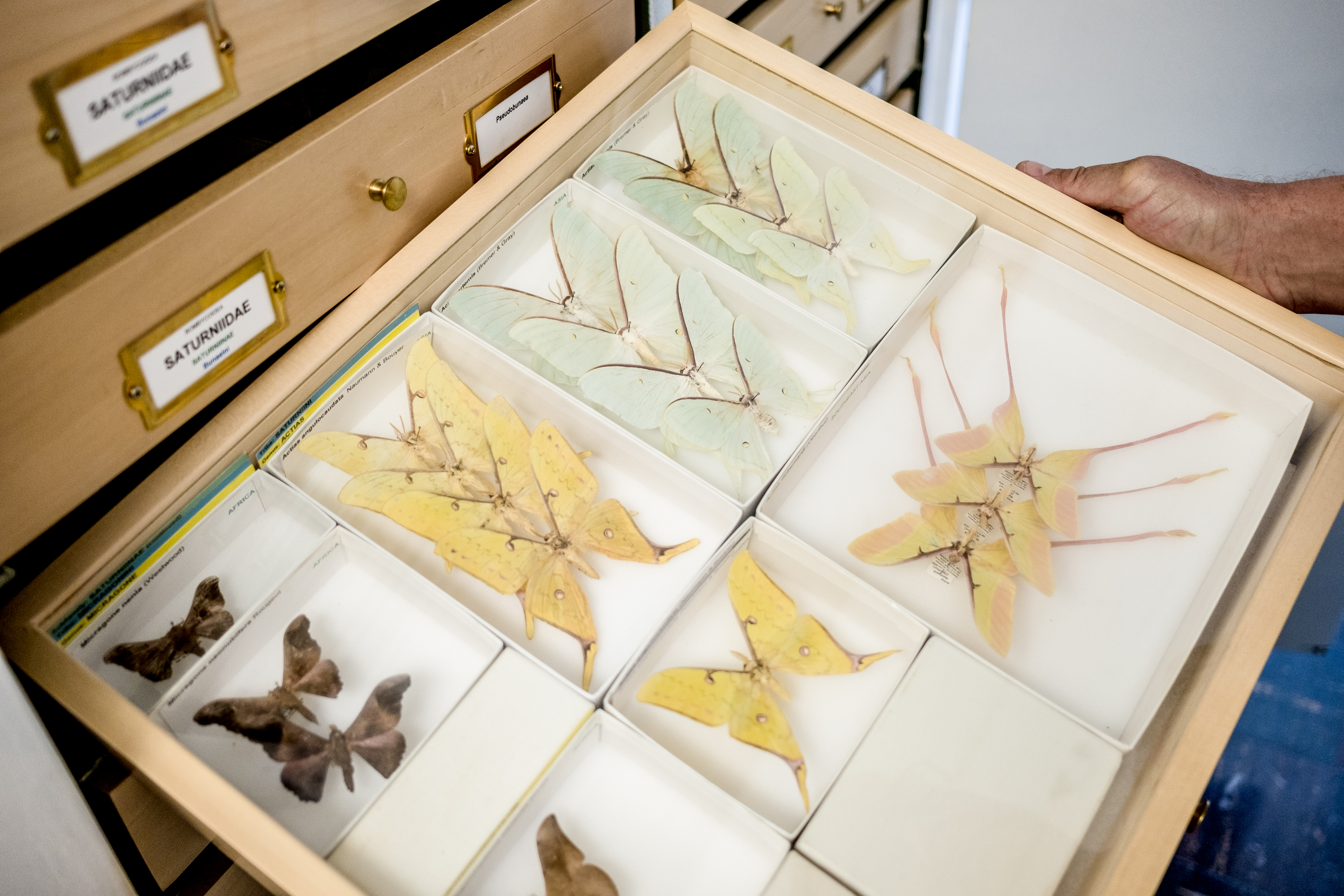Loan Policy and Requests
Please direct loan requests to:
Dr. Sarah Smith (smith462@msu.edu)
Department of Entomology, Michigan State University
288 Farm Lane, Room 243 Natural Science Building
East Lansing, MI 48824-5634

- Acknowledgment of receipt of specimens. Original invoice to be signed and returned upon receipt of specimens. Copy retained by borrower.
- Duration of loans. Unless otherwise arranged, loans are made for 2 years, renewable yearly. Primary types, if loaned, are for a maximum of 3 months.
- Student loans. Loans for graduate students will be made to their major professor.
- Transfers to other workers. Loans may not be transferred to another worker without permission of the Director.
- MSU labels. Collection identification labels are included. This label need not be removed when specimens are returned.
- DNA. Given the permission of the Director, partial destruction of specimens for DNA extraction is allowed
- Dissections. Dissections are expected in revisionary work; specimens for dissection should be selected from a series when possible, and all dissected structures must be stored in a commonly accepted way that positively associates them with the specimen.
- Microscope slides. All slides prepared by the borrower must be clearly labeled for positive association with the specimen, must not be placed in the box with pinned specimens, and should be returned at the same time as the specimens.
- Return of specimens. Prompt return of specimens is expected when the research is completed or when another person needs to examine the specimens after the initial loan period. Pinned specimens should be arranged in the shipping boxes so species are clearly separated. Determination labels on all specimens would be greatly appreciated. Specimens should be returned in the original or comparable mailing containers and shipped via the same carrier used (or better). Primary types must be sent via Registered First Class or Registered Airmail (foreign). Vials, slides and other heavy objects should be segregated from pinned material. Specimens should be packed the same way they were received. See “Steyskal, G.C., W.L. Murphy and E.M. Hoover. 1986. Insects and mites: techniques for collection and preservation. USDA, ARS, Misc. Publ. No. 1443, p. 44” for guidelines on packing specimens for shipment.
- Designation of types. All primary types designated from MSU material must be returned to MSU unless other arrangements are made with the Director. Deposition of secondary types from MSU material in other institutions is encouraged, but should be made with approval of the Director. Types must be labeled with the genus, species, and author. In some cases it may be desirable to deposit a primary type “on permanent loan” in another institution. Such cases must be approved by the Director.
- Retention of specimens. Primary types, unique specimens and previously identified specimens are to be returned unless other arrangements are made with the Director. Reasonable numbers of duplicates from series with equivalent data identified by the borrower (including some paratypes) may be retained. Exchanges that will broaden our collection are encouraged
- Damaged specimens. All specimens should be returned; any that are damaged beyond scientific value should be segregated before return.
- Change of position or address. The Director should be notified of any changes.
- Reprints. Copies of publications based in part on MSU material would be appreciated. If reprints or photocopies are not available, citations are sufficient.
- Visits. Researchers are encouraged to visit the Collection, conduct research, and hand-carry borrowed specimens.
Collection director
Anthony Cognato
cognato@msu.edu
445A Natural Science
(517) 432-2369
Collection manager
Dr. Sarah Smith
smith462@msu.edu
426 Natural Science
(517) 353-1630
Entomology department
Office: 243 Natural Science
Phone: (517) 355-4663
Fax: (517) 353-4354



 Print
Print Email
Email